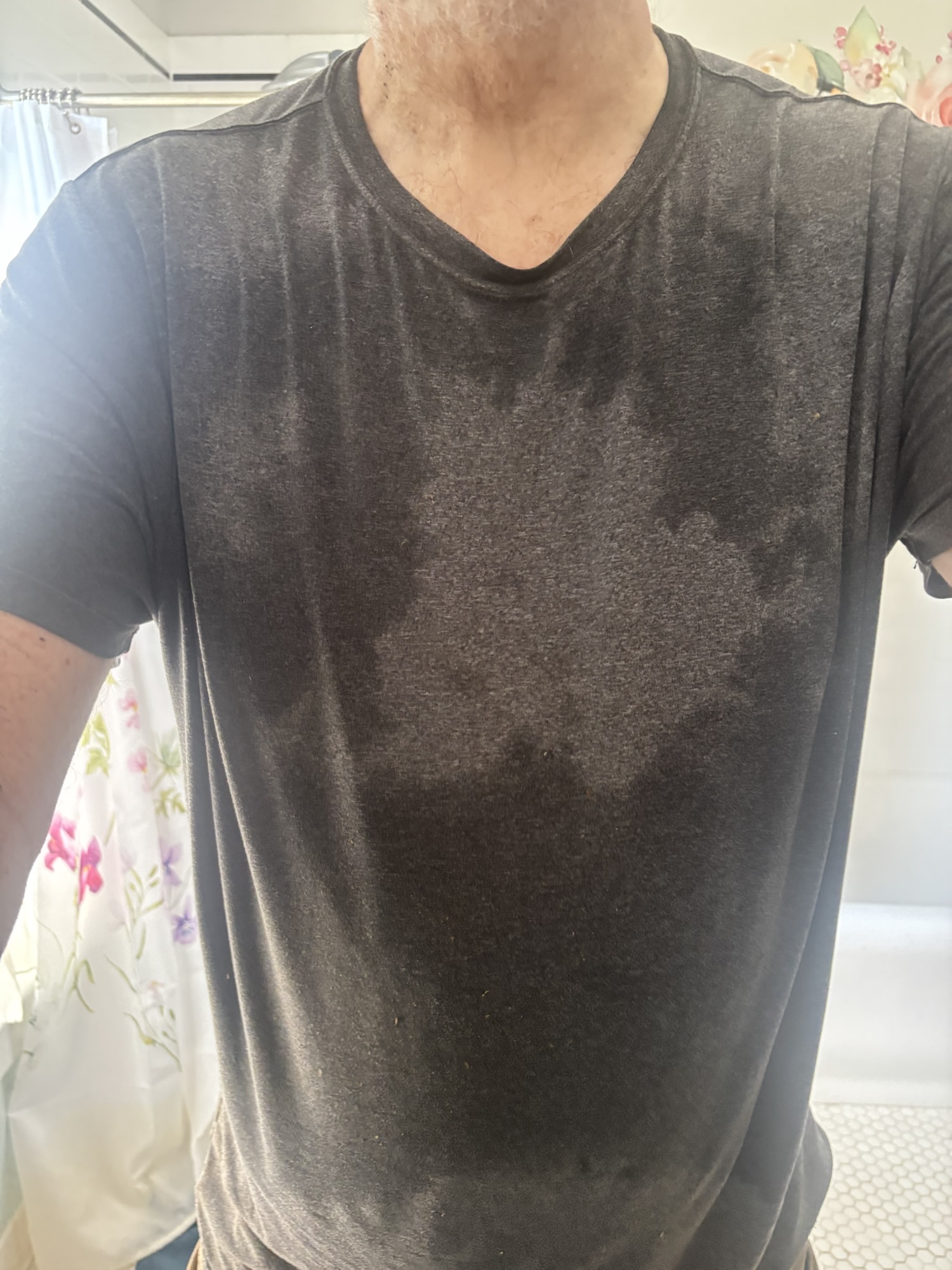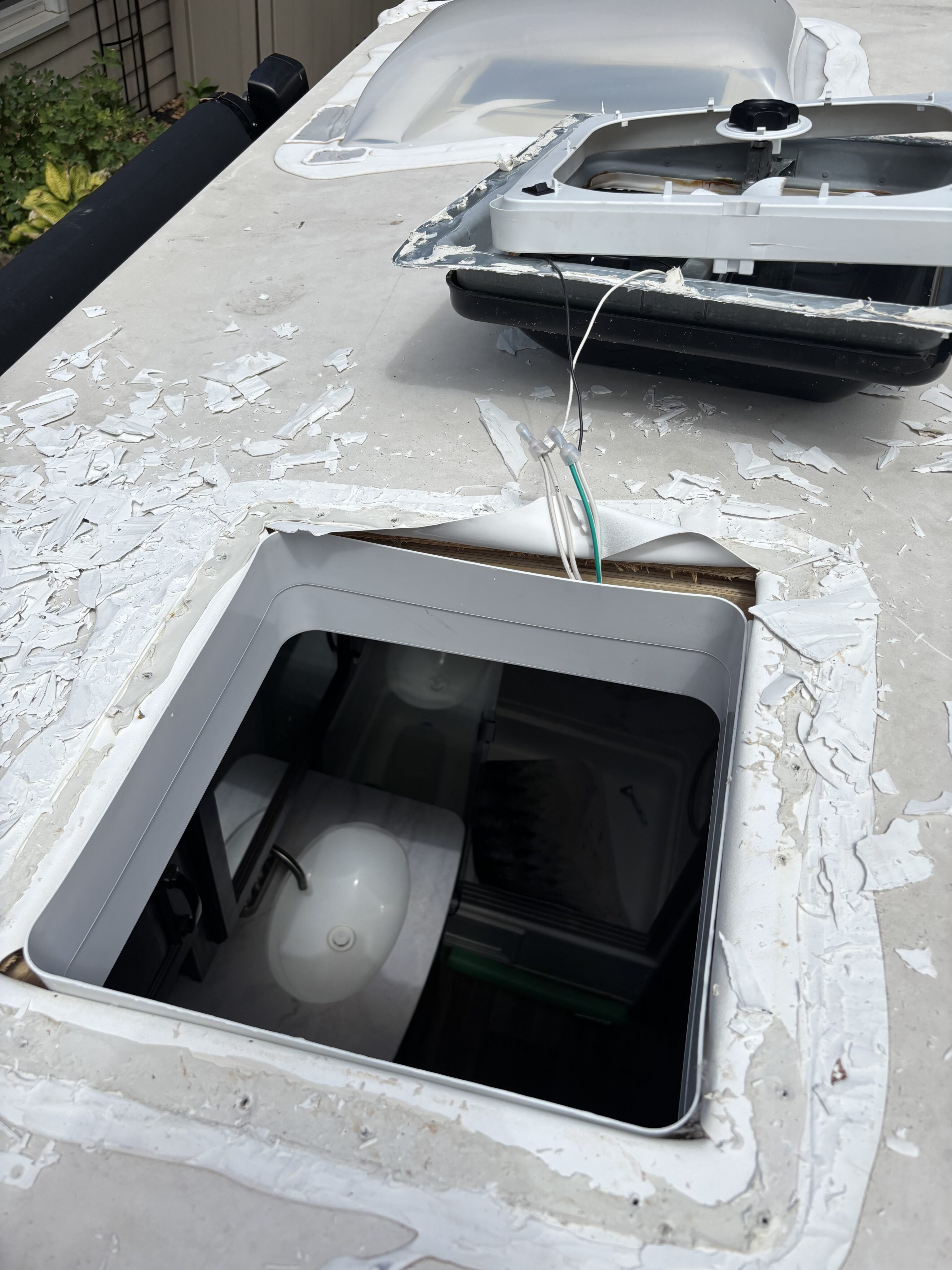Wednesday night, some of our fellow Cougites (yes, I’m inventing that word, and no, I will not be taking notes) said that they were going for a hike at 7:30 am. Did you know there was a 7:30 am now? I guess I knew back when I worked, but I’m retired, and mornings are for lazily checking all my socials, doing the Wordle and Connections, and stretching out my hamstrings as well as I can. The four of us might toddle out of bed by 10 am, but only because we all need a pee.
Also, because of my chronic pain and Vicki’s sciatica, not to mention the blisteringly hot weather we had while we were there, we’re really only good for one “thing” a day. Sometimes two. And while we were there, that one thing was variously a hike to Old Man Cave, a trip into Logan to shop at the Kroeger, a hike to Ash Cave, playing corn hole (extremely badly – the spectators made us stop at 11 because otherwise the rest of the brackets wouldn’t get done by dinner). Also, Vicki signed up to provide a bunch of stuff for the pot luck dinners on Friday and Saturday night, so she spent a lot of time cooking.
The cave hikes were amazing. In many ways they reminded me of the Niagara Escarpment, especially the Bruce Peninsula, except the cliffs and undercut caves were on both sides of you. But there were differences too – these cliffs were sandstone rather than dolomite, so they didn’t have rectilinear cracks all through them, and the pattern of water erosion was different. Both “caves” were more big overhangs where the cliffs had been undercut by running water. I found Old Man Cave more interesting because the hike is through a narrower canyon and there were some very interestingly designed bridges over the river in several places. I would have loved to fly my drone though there and video some of that, but the process of getting permission to fly in an Ohio State Park was somewhat complex. Plus I probably would have had to do it at 7:30 am, whenever that is.
As I said, there were a couple of pot luck dinners in the evenings – plenty of food and really good food too. Brian make pork butt that was excellent. One morning there was a pot luck breakfast as well. I forget who was manning the grill (I told you I’m bad with names, didn’t I) but he somehow made world’s thickest pancakes without burning the outside or leaving a gloppy uncooked core.
Friday I flew my drone around to take another video of the campsite while everybody else was lined up for dinner. As I’m writing this it’s still uploading, but when it’s ready, it should be visible at:
After dinner, the evening’s entertainment was often sitting around the campfire and chatting with the other Cougites. Some nights we played a game called Left Right Center, which is completely random and mindless, but also crazily entertaining. A good thing to play when you’re drinking your favorite adult beverages.
One of the suckiest thing about chronic pain is no matter how careful you are to try and sit in a way to minimize the pain, it just sucks the energy out of you all day, so it’s mostly my fault that we didn’t stay well into the night at the campfire like so many other people did. I feel bad about that, because I loved the time we did have together.
Saturday night and Sunday morning, many of the other Cougites were packing up to leave, and by the time we had sorted out ours and the dogs bathroom activities, there was only one other Cougar left. And they left the next day. We stayed until Wednesday – it’s the first time we’ve camped for a week in our trailer, and it’s not the end because on Wednesday we packed up and headed for another campground, Mountain Top Campground in PA. We’re going to be here until next Tuesday, making a 15 day total trip. We’re trying to expand our time horizons for trips because either next year or the year after, we’d like to take a trip out of British Columbia, maybe doing the US route one way and the Canadian route the other.
Because I bet you’re dying to know, we used the pooper scooter 3 days at Top O’ The Caves, doing the grey tank 3 times and the black tank once. I know a lot of people say they don’t use the pooper scooter with the black tank, but I gave it a good and thorough flush-out afterwards, and did the grey tank afterwards, making 3 trips on the same day.
Oh, and returning from one of those trips to the dump station, I got what I assume is the southern equivalent of a bollocking – after I drove back to our site, the two “trainee camp hosts” at the entrance to our loop of the campsite came by in their golf cart, and asked me if I was all right because they saw me driving fast and assumed I was having an emergency. They sounded so geniune. Yeah, ok, I get it. I tried to pay more attention to the 5 mph speed limit after that. It’s a lot easier to do that when you’re going out to the dump station, because the pooper scooter says not to exceed that speed, but coming back empty with the scooter in the bed of your truck when your loop of the campground is almost completely empty, not so much.


